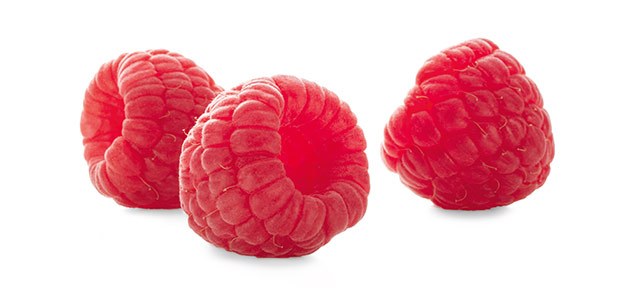Lights, camera, action: here come the raspberries!

The spotlight falls all too rarely on raspberries, even though they are truly nutritious superheroes. Today we look behind the pink facade of these knobbly little berries and explain why they are so good for you.
What are raspberries?
The raspberry is a shrub with delicate thorns. It is a member of the rose family. Its fruit, the raspberry, looks like a tiny, pink dwarf hat and seems to consist of individual spherules. The reason for this is that, strictly speaking, raspberries are not berries at all but are actually aggregate fruits consisting of ‘drupes’. An individual fruit – a pink ‘drupelet’ – emerges from each carpel that grows along the receptacle. These join together to form an aggregate fruit that looks like a berry.
It’s worth taking a look inside
If we look behind the facade of these little berries, we can see that what’s inside is also extremely impressive: raspberries are low in calories as they contain very little sugar. But this does not detract in any way from their taste! They have a deliciously sweet, aromatic and slightly sour flavour. Raspberries also have a good ratio of calories to fibre: 100 calories of fruit (approximately 300 g) contain almost half our daily fibre requirement. These little powerhouses also hold their own when it comes to vital substances: they are an excellent source of vitamins A, B, C and K and numerous minerals like potassium, calcium, magnesium and iron. These support the immune system, help to build strong muscles and bones, have a positive effect on intestinal and digestive complaints and are good for blood vessels and blood formation.
Let’s take a closer look
In addition to the previously mentioned substances, raspberries also contain a whole host of phytochemicals. These include anthocyanins, which are responsible for the berry’s red colour. Flavonoids, the parent class of molecules to which anthocyanins belong, are believed to have particularly good health benefits: they are considered to have antioxidant and anti-inflammatory properties and to be good for the cardiovascular system. The tannins that they contain have a detoxing and antipyretic effect. They support the metabolism of urea and have a cleansing effect.
So it’s high time to put raspberries in the spotlight in your cuisine: curtain call ... mouth open!
Your Dole Team

